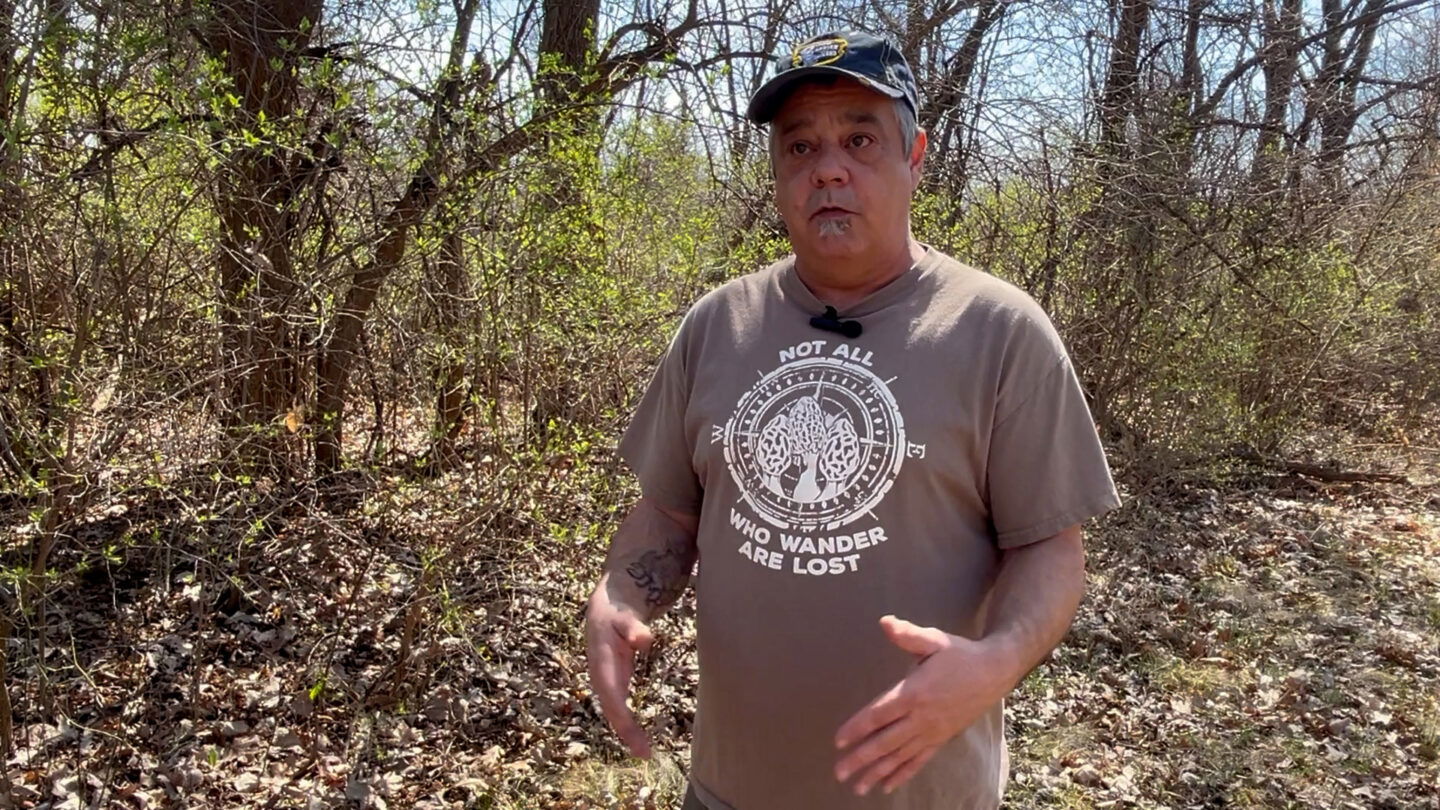Warmer weather brings morel season

By Charles Christian
Spring brings out a specific type of hunter in Northwest Missouri, one who is armed with a bag and a keen eye.
Morel mushrooms are considered a delicacy by many and places to find them are often a closely guarded secret. These honeycombed, capped mushrooms grow from 2 to 12 inches high and are usually found in moist wooded areas.
Longtime hunter Tom Weipet, known as “The Mushroom King,” said there are signs in nature that point to the prized morels.
“A lot of morels are associated with dead trees,” Weipert said. “So, look for a tree that is still standing but maybe the bark is starting to come off.”
It is in wooded areas that hunters can have the most luck. Although in Northwest Missouri, the season usually begins around the first of April, warmer weather and recent rain already have people out looking.
Other signs of nature can offer clues about the presence of an abundance of morels.
“I can tell how good of a season it will be by lilacs being in bloom,” Weipert said. “The more vibrant and colorful they are means the presence of a lot of moisture, and this is a good indicator of morels.”
Weipert, who has been searching for morels since his father introduced him to the pursuit at the age of 4, said hunters learn to see signs of potential growth and where the mushrooms may be hiding. Some, like Weipert himself, even follow the progression of the season by starting as far south as Oklahoma and working northward into Nebraska.
“There are morels in all 50 states,” Weipert said. “Here in Missouri, we have at least four or five kinds.”
The benefits of morels include both their unique flavor and their hefty price tag. Experts say that morels can sell for anywhere from $35 to $50 per pound. The cost is mostly due to the relative scarcity of morels in our area, along with the challenges hunters face in picking a large quantity.
According to another longtime hunter, Amanda Recob, the benefits of morels go beyond the taste and potential profit.
“It’s like an Easter egg hunt,” Recob said. “The smell of the woods, the wild animals, the crunching of the leaves and the excitement of spotting your first one of the year and taking a picture — all of this is part of the excitement.”
Recob also started hunting morels as a child. After her father introduced her to the art and science of the hunt, she said she fell in love with the whole process.
The Department of Conservation has a booklet to help distinguish morels from other types of mushrooms, especially those that may be poisonous to humans. According to the agency, there are no licenses needed to harvest morels, but officials urge hunters to respect private property rights and consult state laws about selling large quantities of mushrooms.
Both Weipert and Recob also urge new hunters to follow the long-standing tradition of carrying along an extra bag or bucket to pick up any garbage found while looking for morels.
To track morel mushroom sightings, visit www.thegreatmorel.com.



